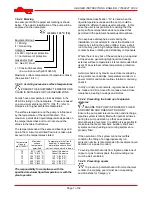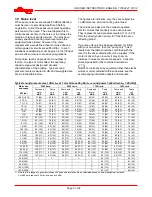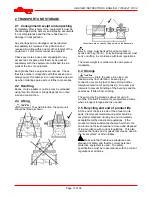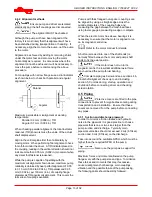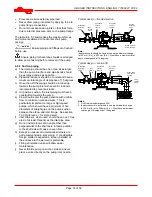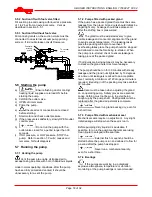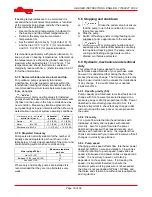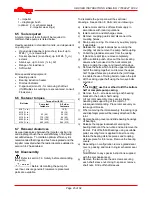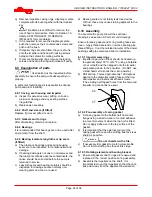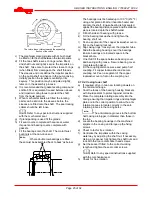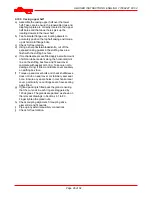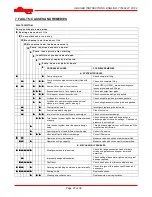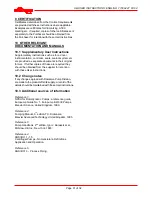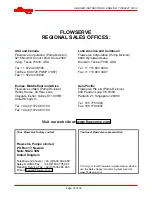
UB USER INSTRUCTIONS ENGLISH 71569247 07-04
Page 21 of 32
®
Our specialist service personnel can help with
preventative maintenance records and provide
condition monitoring for temperature and vibration to
identify the onset of potential problems.
If any problems are found the following sequence of
actions should take place:
a) Refer to section 7,
Faults; causes and remedies
,
for fault diagnosis.
b) Ensure equipment complies with the
recommendations in this manual.
c) Contact Flowserve if the problem persists.
6.2.1 Routine inspection (daily/weekly)
The following checks should be made
and the appropriate action taken to remedy any
deviations:
a) Check operating behaviour. Ensure noise,
vibration and bearing temperatures are normal.
b) Check that there are no abnormal fluid or
lubricant leaks (static and dynamic seals) and
that any sealant systems (if fitted) are full and
operating normally.
c) Check that shaft seal leaks are within acceptable
limits.
d) Check the level and condition of oil lubricant. On
grease lubricated pumps, check running hours
since last recharge of grease or complete grease
change.
e) Check any auxiliary supplies eg. heating/cooling,
if fitted, are functioning correctly.
Refer to the manuals of any associated
equipment for routine checks needed.
6.2.2 Periodic inspection (six monthly)
a)
Check foundation bolts for
security of attachment and corrosion.
b) Check pump running records for hourly usage to
determine if bearing lubricant requires changing.
c) The coupling should be checked for correct
alignment and worn driving elements.
Refer to the manuals of any associated
equipment for periodic checks needed.
6.2.3 Re-lubrication
Lubricant and bearing temperature analysis can be
useful in optimizing lubricant change intervals. In
general however, the following is recommended.
See section 5.2.1 for grease
recommendations.
Regrease
- via grease nipples every 2 000 hours or
sooner depending on the severity of the application.
a) It is important not to under or over grease the
bearings as this will lead to over heating and
premature failure. Grease lubricated bearing
housings have grease nipples fitted in the
bearing brackets.
b) The maximum allowable operating temperatures
for anti friction bearings will vary from unit to unit,
depending on ambient and fluid temperature.
The rise above ambient should not normally
exceed 55
°
C (131
°
F) or a combined maximum
of 95
°
C (204
°
F).
c) A continuously rising temperature or an abrupt
temperature rise indicates a problem. If these
symptoms occur, stop the pump immediately and
investigate the cause.
TIME
T
E
MPERAT
URE
Grease change
- every 4 000 hours or sooner
depending on the severity of the application.
a) Remove the bearing bracket from the rotor
assembly.
b) Brush the bearing bracket with hot kerosene (100 to
115 °C/212 to 240 °F) or other non-toxic solvent.
c) Clean and flush out the housing with a light
mineral oil.
d) Do not use waste oil to clean the housing.
To clean the bearings:
a) Wipe off as much grease as possible with a clean
lint-free cloth.
b) Brush bearings with hot kerosene (80 to 90 °C/
175 to 195 °F) while gently spinning the outer
bearing ring.
c) Spin each ball to ensure that it is clean.

